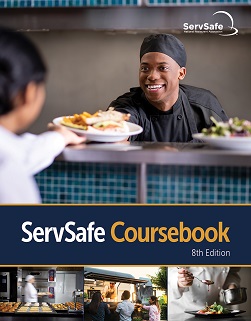Quick Tips for Effectively Finishing Your ServSafe Food Handler Course Online
Quick Tips for Effectively Finishing Your ServSafe Food Handler Course Online
Blog Article
Comprehensive Food Handlers Educating for Health and Safety And Security
In today's swiftly advancing food service landscape, detailed food handlers training has become an essential element for guaranteeing hygiene and safety and security. By instilling important methods connected to hand hygiene, food storage space, and sanitation, this training not just reduces the danger of foodborne health problems however also reinforces compliance with governing criteria. The effects of such training expand beyond plain conformity; they touch upon public health and customer count on. The effectiveness of these training programs can vary considerably. What elements genuinely determine their success in cultivating a culture of safety?
Significance of Food Security Training

Additionally, food safety training helps to make sure that staff members understand existing regulations and standards, which are important for maintaining functional licenses and avoiding pricey penalties. Routine training sessions likewise function as a system for enhancing ideal methods, therefore minimizing the probability of human error, which usually acts as a leading reason of food contamination.
Furthermore, spending in food safety and security training can improve a facility's track record, as customers increasingly focus on eating experiences that mirror high safety and security criteria. Such aggressive steps not only protect consumers but additionally contribute to the long-lasting success of food businesses. In summary, comprehensive food safety and security training is a vital component of food service operations, straight influencing both public wellness and company sustainability.
Key Concepts of Health
Keeping high standards of hygiene is essential in any food handling setting to avoid contamination and make certain the safety and security of customers. The essential concepts of hygiene include several important practices that food handlers must regularly use.
First, hand health is critical; food handlers need to wash their hands thoroughly with soap and water prior to and after taking care of food, as well as after making use of the bathroom or touching any kind of possibly infected surfaces. Secondly, devices and surfaces need to be consistently cleaned and sanitized to eliminate microorganisms. This consists of tools, reducing boards, and countertops, which should be maintained in a tidy problem.


Correct food storage is likewise important; raw foods need to be kept individually from cooked or ready-to-eat items to avoid cross-contamination. servsafe certifications. Additionally, maintaining proper temperature level controls is crucial; subject to spoiling products ought to be maintained safe temperature levels to hinder bacterial growth
Last but not least, personal hygiene can not be ignored. Food handlers ought to put on clean garments, usage hair restraints, and stay clear of functioning when ill. By adhering to these crucial principles of health, food handlers can significantly lower the danger of foodborne illnesses and advertise a more secure dining experience for all customers.
Common Foodborne Diseases
Although numerous foodborne health problems can be prevented via correct health and secure food handling methods, they remain a significant public health problem. Foodborne microorganisms can bring about a variety of ailments, ranging from mild gastrointestinal distress to serious issues and also fatality.
Typical foodborne diseases consist of salmonellosis, triggered by Salmonella bacteria, often connected to undercooked chicken and eggs. An additional common health problem is listeriosis, related to unpasteurized milk products and ready-to-eat meats, which can be particularly harmful for expecting women and immunocompromised individuals. Norovirus, frequently gotten from contaminated food or surfaces, is known for its rapid spread and capability to cause outbreaks in common settings.
Escherichia coli (E. coli) infection, significantly connected with undercooked ground beef and infected produce, can bring about extreme stomach pains and kidney failure in some cases. In addition, Clostridium perfringens, often found in large amounts of food that are poorly saved, can trigger gastrointestinal disorder with signs and symptoms showing up soon after consumption.
Recognizing these health problems is vital for food handlers, as awareness can considerably decrease the risk of contamination and shield public health and wellness. Proper education and training are important elements in combating foodborne diseases.
Ideal Practices for Food Handling
Effective food dealing with techniques are vital in avoiding the spread of foodborne illnesses. Proper hand health is crucial; food trainers must wash their hands completely with soap and water before and after dealing with food, especially raw meat or poultry. This basic action dramatically minimizes the threat of cross-contamination
Second of all, maintaining ideal food storage space temperature levels is essential. Disposable things must be stored at or below 40 ° F(4 ° C) to hinder bacterial growth. Additionally, cooked foods need to be kept above 140 ° F(60 ° C) up until served.
Finally, making sure tidiness of surfaces and tools is necessary. Regularly disinfect counter tops, cutting boards, and utensils, particularly after preparing raw foods. Use separate cutting boards for ready-to-eat and raw foods to even more lessen contamination risks.
In addition, when preparing food, it is essential to comply with the principle of "first check my source in, first out" (FIFO) to take care of supply properly and lower perishing. Last but not least, constantly review and stick to foodstuff labels for secure cooking temperature levels and dealing with directions. By applying these best practices, food handlers can dramatically boost food security and shield public health.
Carrying Out a Security Society
Developing a safety and security culture within a food taking care of setting is important for promoting a dedication to food security amongst all team member. This culture highlights the relevance of food safety as a shared duty, urging workers to prioritize hygiene practices regularly.
To apply a safety culture, companies ought to begin by supplying comprehensive training that resolves food handling methods, prospective risks, and the relevance of individual health. Training sessions need to be interactive and customized to the particular roles of employee, making sure importance and involvement.
Furthermore, leadership plays a crucial function in developing this culture. Administration must model check secure techniques and communicate the relevance of food security frequently. Recognizing and rewarding employees who maintain safety criteria can further reinforce these habits.
Additionally, open communication channels must be established, allowing team to report security issues without concern of consequence. Normal safety audits and comments sessions can assist identify locations for renovation and strengthen responsibility.
Inevitably, cultivating a safety and security culture not just boosts compliance with food safety and security guidelines however likewise protects public health, fosters worker morale, and contributes to the total success of the food dealing with facility.
Final Thought
To conclude, comprehensive food handlers training plays a critical role in advertising hygiene and safety within food solution establishments. By outfitting employees with vital expertise about food safety and security principles, usual foodborne health problems, and ideal practices for taking care of food, such training dramatically lowers wellness threats. Cultivating a society of safety boosts the facility's credibility and lines up with consumer expectations for high safety and security criteria, eventually contributing to public health and wellness defense and the general success of the food solution sector.
In today's quickly developing food service landscape, detailed food trainers training has arised as a critical component for making sure health and safety.Food safety and security training is important for keeping high requirements in food handling and preparation, with researches suggesting that correct training can minimize foodborne health problems by up to 30%. In summary, detailed food security training is a vital component of food solution procedures, straight influencing both public wellness and organization sustainability.

Report this page